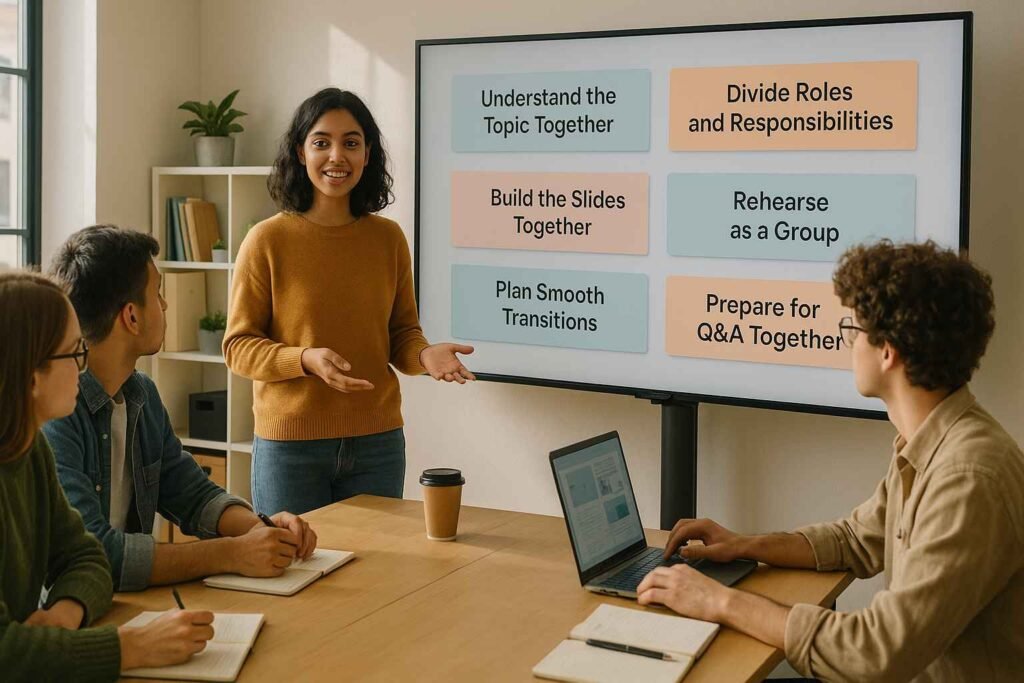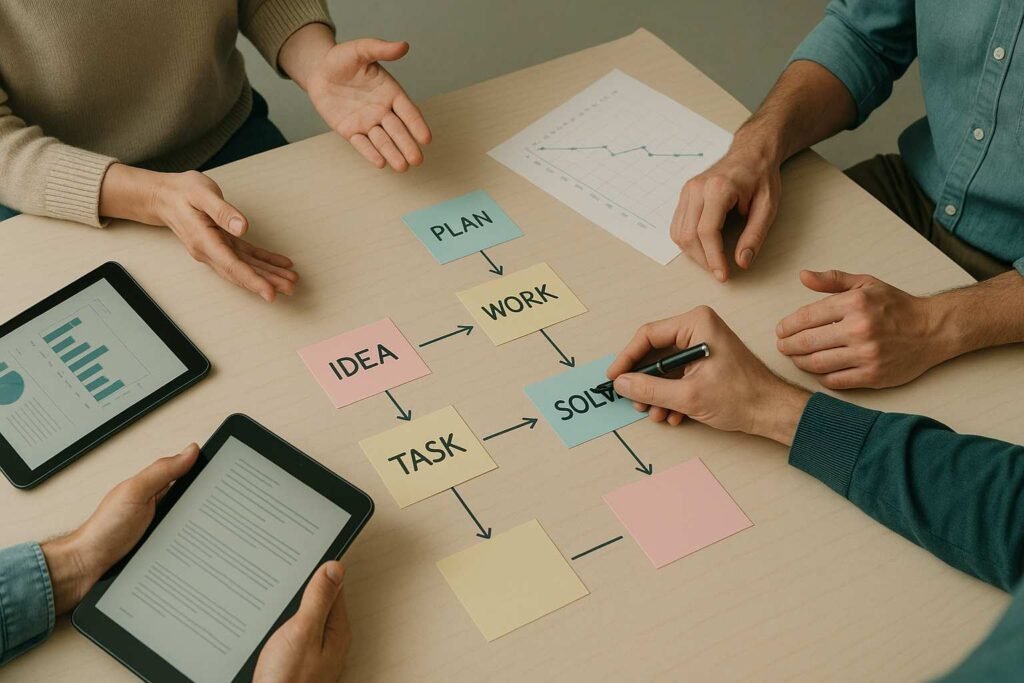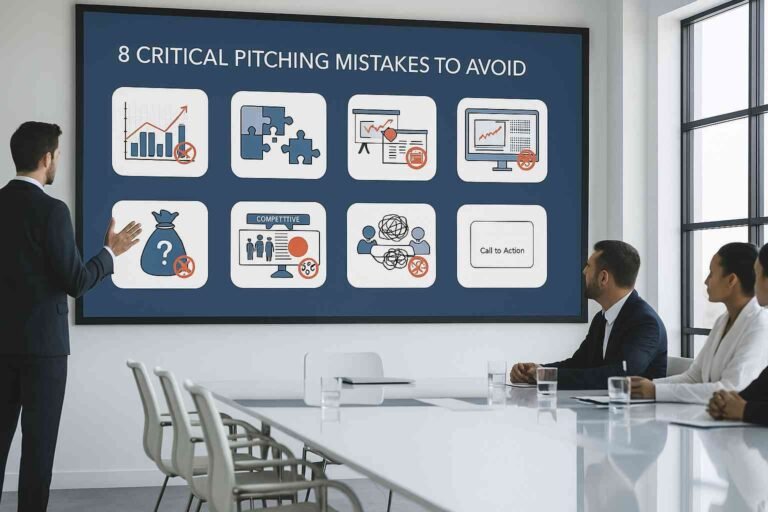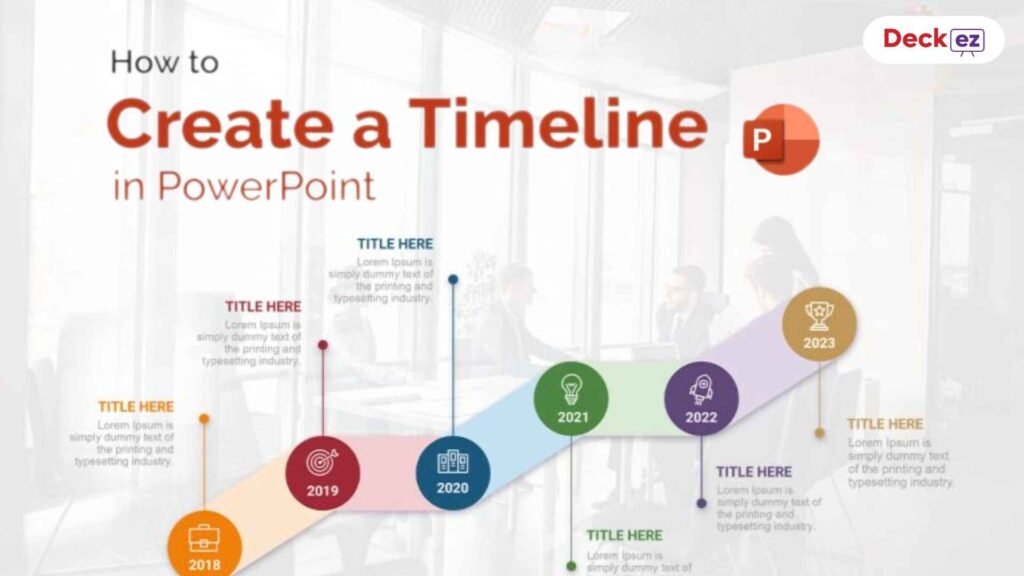Group presentations are one of the most common ways people share ideas in schools, colleges, and offices. Whether you’re explaining a project to classmates, pitching an idea to clients, or sharing progress with your team, presenting as a group adds a new level of teamwork and coordination.
Unlike solo presentations, a group presentation requires smooth communication, clear role division, and a shared purpose. When done right, it highlights cooperation, confidence, and professionalism.
In this beginner’s guide, you’ll learn what a group presentation is, why it matters, and how to prepare, practice, and present confidently with your team.
Who Is This Guide For?
This guide is perfect for:
- Students working on classroom or college projects
- Professionals presenting as part of a team
- Anyone learning the basics of public speaking and collaboration
What Is a Group Presentation?

A group presentation is when two or more people work together to deliver a talk or project in front of an audience.
Instead of one person covering everything, each member speaks on a specific part, creating a complete and balanced message.
These presentations are common in classrooms, business meetings, and research discussions. The goal is to combine each person’s strengths to make the topic more engaging and understandable.
For example, one team member might handle research, another explains the visuals, and another summarizes results — together forming a smooth flow of information.
Why Are Group Presentations Important?
Group presentations aren’t just about grades or meeting project deadlines — they’re about building valuable life and career skills. Every time you prepare and present as a team, you learn lessons that go far beyond the classroom or meeting room. From learning how to communicate clearly to managing time and confidence, group presentations shape you into a better professional and teammate.
1. Encourages Teamwork and Collaboration
Working as a group helps you experience what true collaboration feels like.
Each member brings a different strength — one might be good at research, another at visuals, and someone else at speaking. Combining these abilities helps the team perform better than any one person could alone.
You learn to:
- Respect different opinions and ideas
- Divide work based on individual strengths
- Motivate and support others when challenges arise
These teamwork skills are essential in almost every career. Whether you work in marketing, education, or IT, success often depends on how well you collaborate to reach shared goals.
Example: In a classroom, students might brainstorm together, then assign research, design, and speaking parts. This mirrors real-world teamwork where projects depend on effective coordination.
2. Improves Communication Skills
Group presentations are one of the best ways to polish your communication abilities. You not only speak in front of an audience but also communicate constantly with your teammates during preparation.
This helps you practice:
- Expressing your ideas clearly and confidently
- Listening to others and understanding different viewpoints
- Using body language, tone, and eye contact effectively
It also develops your ability to explain complex topics in simple words — a vital skill for meetings, interviews, and leadership roles. You begin to understand that good communication isn’t just about speaking; it’s also about how well you listen and respond.
Tip: Try recording your group rehearsals. Watching them later helps you identify where your tone, expressions, or clarity can improve.
3. Strengthens Problem-Solving Skills
When several minds work together, differences in opinion are natural. You might disagree about slide designs, key points, or who should speak first — and that’s perfectly okay. Learning to resolve these issues constructively helps you grow as a professional.
Group presentations teach you how to:
- Discuss disagreements calmly and respectfully
- Find common ground through logic and evidence
- Make decisions that benefit the team instead of individuals
These experiences help you become more adaptable and solution-oriented. You’ll start viewing challenges as opportunities to think creatively and cooperate under pressure — a must-have quality in any team environment.
Example: If two members suggest different slide layouts, rather than arguing, the team could test both and choose the one that best fits the audience and content.
4. Develops Time Management
Coordinating multiple people naturally builds time management skills. Everyone has different schedules, tasks, and speeds, so staying organized is essential. Group presentations help you learn how to balance workloads, set priorities, and meet shared deadlines.
You’ll also discover how to:
- Plan meetings and practice sessions that suit everyone
- Divide the workload evenly to avoid last-minute stress
- Keep track of progress and adjust timelines when needed
These time management lessons are directly transferable to your future career. Whether you’re managing a team project or working on client deliverables, knowing how to plan your time as a group ensures smoother outcomes.
Tip: Use shared tools like Google Calendar, Trello, or Asana to track progress. They help teams stay accountable and avoid confusion.
5. Builds Confidence and Reduces Stage Fear
Speaking as part of a group makes public speaking much less intimidating. You’re not alone — your teammates share the spotlight, which helps you relax and focus on your message instead of your nerves.
Over time, you’ll notice that:
- You feel more comfortable speaking in front of others
- You trust yourself to handle unexpected questions
- You become proud of contributing meaningfully to a shared goal
Confidence doesn’t come overnight, but group presentations create a safe environment to practice. The support of your teammates, combined with preparation and encouragement, helps you overcome fear and build self-assurance.
Example: A shy student who starts by presenting just one slide often gains enough confidence to lead the introduction next time — that’s personal growth in action.
In Short
Group presentations prepare you for the real world. They teach you to work with others, think clearly, manage time, solve problems, and express yourself confidently — all skills that employers and educators value.
The next time you’re asked to present as a group, remember — it’s not just about finishing slides; it’s about learning how to grow, communicate, and succeed together.
If you’re looking for fresh ideas to make your next team presentation stand out, explore our guide on Top 10 Engaging Presentation Topics to Inspire Your Team.
How to Prepare for Your First Group Presentation
Preparation is the foundation of a great presentation. Follow these beginner-friendly steps to ensure your team stays organized and confident.

1. Understand the Topic Together
Begin by discussing the topic as a team. Define the main goal, audience, and message you want to communicate.
Everyone should have the same understanding before you start creating slides.
2. Divide Roles and Responsibilities
Assign tasks based on each person’s strengths.
| Role | Responsibility |
| Leader/Coordinator | Oversees progress and timing |
| Researcher | Collects facts, data, and visuals |
| Designer | Ensures slides look consistent |
| Speaker(s) | Present specific sections |
| Editor | Reviews flow and accuracy |
Clear roles avoid confusion and duplication.
3. Build the Slides Together
Even if you split sections, design and structure must be consistent.
Use the same font, color scheme, and tone so your slides look like one story, not multiple parts.
4. Rehearse as a Group
Schedule several full rehearsals. Practice improves timing and handovers.
Try recording one session so you can review your performance together.
5. Plan Smooth Transitions
Before presenting, decide how each member will hand over to the next.
Example phrases:
- “Now, [Name] will take you through the design part.”
- “To explain this in detail, I’ll hand it over to [Name].”
Smooth transitions make your team look professional and well-prepared.
6. Prepare for Q&A Together
Discuss likely audience questions and assign who will answer each type.
If you don’t know an answer, say politely, “We’ll check and get back to you after the session.” — this keeps your team credible.
Beginner Tips for Delivering a Group Presentation
Delivering as a group can feel challenging at first, but with practice, it becomes fun and effective.

1. Introduce Your Team
Start by introducing each member and their role. It sets expectations and shows that your team is organized.
2. Stay Engaged Even When Not Speaking
Pay attention, smile, and nod when teammates present. It shows unity and keeps the audience connected.
3. Mind Your Body Language
Stand straight, face the audience, and use natural gestures. Eye contact with both teammates and viewers builds confidence.
4. Keep Your Voice Clear
Speak slowly and confidently. Add small pauses between key points to let ideas sink in.
5. Handle Nerves Calmly
It’s okay to feel nervous. Focus on the message, not on perfection. Deep breaths and practice sessions will help you stay relaxed. If you want to learn how to speak with confidence and improve your stage presence, check out our detailed guide on how to become a better presenter. It covers simple strategies to overcome fear, connect with your audience, and deliver with impact.
6. Involve the Audience
Ask short questions, use examples, or show visuals that make your talk interactive. The more engaged your audience is, the more memorable your presentation becomes.
7. Respect Time
Each member should manage their time carefully. Avoid dragging sections or skipping points.
8. End Strong
Close with a short summary of your main message and a thank you. Leave the audience with one clear takeaway.
Common Beginner Mistakes to Avoid
Even well-prepared teams can slip up. Watch out for these common pitfalls:
| Mistake | Better Approach |
| Skipping team practice | Schedule at least two group rehearsals. |
| Repeating the same points | Review slides together to remove overlaps. |
| Inconsistent visuals | Use one shared slide template and color palette. |
| Poor handovers | Plan transitions before the presentation. |
| Ignoring teammates | Stay supportive and engaged throughout. |
Avoiding these mistakes makes your team look polished and professional.
Key Takeaways
- A group presentation means shared effort and equal participation.
- Success depends on clear roles, practice, and consistency.
- Smooth transitions and unified design show professionalism.
- Confidence comes from preparation and teamwork.
- Always rehearse together — coordination is key.
Conclusion
Group presentations are not just about standing on stage — they’re about learning to work as a team, communicate clearly, and deliver with confidence.
When each member supports the other, your audience sees not just a presentation, but teamwork in action.
So, start simple, plan together, and practice as one. Every great presentation begins with collaboration.
Frequently Asked Questions
1. What makes a group presentation different from a solo one?
A group presentation involves multiple speakers working together on one topic, dividing roles, and coordinating their delivery. It focuses on teamwork and collaboration.
2. How can beginners plan their first group presentation?
Start early, divide tasks clearly, practice several times, and keep slides simple. Focus on teamwork, not perfection.
3. Should every member speak during the presentation?
Yes, everyone should speak at least once. It shows shared responsibility and keeps the audience engaged.
4. How can we make transitions smoother?
Rehearse handovers using short linking sentences like, “Now, [Name] will explain the next part.” This keeps the flow natural.
5. How do we handle questions we can’t answer?
Stay calm and honest. Say, “That’s a good question — we’ll find out and follow up after the session.” The audience appreciates professionalism.









